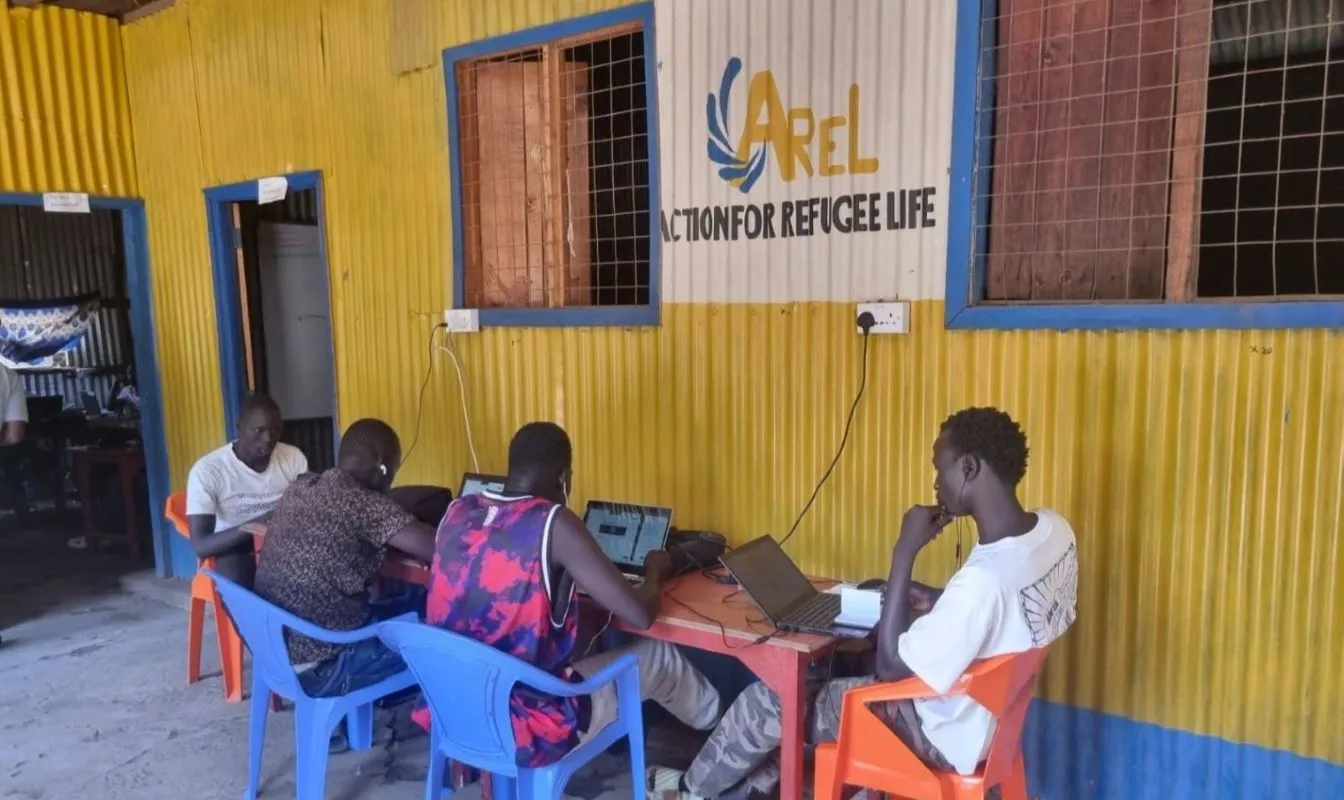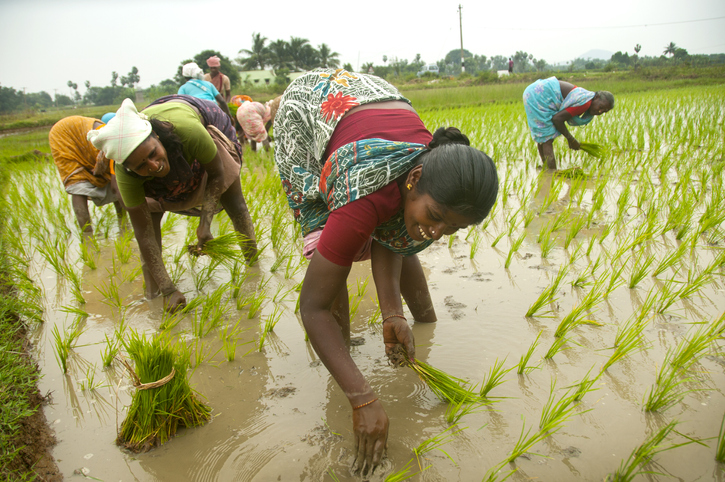The African Continental Free Trade Agreement, which was signed in 2018, aims to give a significant boost to trade within the continent. This column explores the formal barriers to trade across borders that the AfCFTA seeks to reduce, but it also explores the informal networks between people and markets that are used to send goods from one country to another. Institutionalization of such linkages between countries will pay dividends in terms of intra-continental trade and economic development.
A persistent conundrum of African trade is the vast difference between the levels of trade within the continent and trade with the rest of the world. Despite significant growth in overall trade and a tripling of intra-African trade in terms of GDP over the last half-century, trade flows between African economies still only account for 10% of total trade.
Figures 1 and 2 illustrate the one-sidedness of African trade. Why this state of affairs persists is a complex question for many reasons, not least that the 54 countries sharing the continent vary widely in their economic fundamentals. Yet the issue of missing intra-continental trade flows is likely to have less to do with the structures of the economies themselves and more with the links between them.
The issue is clearly not rooted in an inability of African countries to produce goods that are useful in other markets or to consume goods from other economies. The large growth in trade and the increase in extra-continental trade is testament to this.
The high level of imports demonstrates that this is not just an issue of African demand being too low: African consumers are buying goods, just not from their neighbors. Similarly, African exporters are supplying goods to markets, just not those in other African countries. The issue is one of missing connections – both physical and economic – between countries on the continent.
Rebalancing the trade relationships of the continent is becoming an increasingly salient policy priority for African governments and regional organizations. The effort to turn the situation around has culminated in the signing of the African Continental Free Trade Agreement.
The AfCFTA and other regional agreements have the potential to support a significant increase in trade within Africa. The architects of the deal forecast that trade between countries on the continent will double within the first decade of its full implementation.
All of this raises questions about what determines trade between countries, particularly countries in Africa: Is it as simple as lowering trade barriers and harmonizing tariffs? Or is that only part of the story?
There has been much research on the effects of different types of agreements on trade between countries and a significant amount has focused on African economies. The standard discussions around trade agreements, free trade zones, customs unions, and the like have proliferated, and this is a significant aspect of the puzzle – one that the AfCFTA addresses.
There are disproportionately high barriers to African goods travelling to other countries within the continent. These can take the form of physical barriers, tariffs, product regulations, quotas, and myriad other restrictions. Good policy is to lower these barriers to foster greater integration of supply chains within Africa and allow goods to travel more freely.
One of the frequently cited tangible barriers to trade within Africa is infrastructure: the transport links between countries are significantly weaker than links to other continents. This problem has two dimensions: external and internal. The lack of adequate connections between African countries over land is often seen as a hindrance to commerce. There is much truth to this: some neighbors lack even a single land connection. Inadequate road networks within countries contribute to the problem by increasing the costs of domestic distribution and transport to seaports.
The issue is compounded for landlocked countries, which must both traverse borders and navigate internal transport systems to reach the coast. Despite these issues, there are significant efforts to ameliorate the problem, largely led by development agencies and the African Union. The so-called Trans-Africa Highway network is one example of a series of projects that are designed to improve road connectivity between both regions and countries.
Reducing non-physical trade barriers is a common feature of economic diplomacy in Africa, with a large number of economic groups emerging and receding in recent history. Many of these organizations (such as the West African Economic and Monetary Union and the Common Market for Eastern and Southern Africa) look to create customs unions and free trade areas in an effort to increase economic integration and trade within their regions.
The effectiveness of these organizations is mixed, but this is not because they do not work in general – it is more rooted in idiosyncrasies of the specific groups and member countries themselves. Trade-promoting unions often have a significant impact on increasing trade and the pursuit of AfCFTA is indicative of this. Efforts to integrate economies further through harmonization of standards, tariffs, and regulations are essential.
Very tangible barriers such as infrastructure, tariffs, and regulations are usually the ones that receive the most policy attention – partly because they are relatively simple to solve, and partly because they are very easy to see. But there are other aspects that researchers have identified that significantly affect trade flows and which are more often ignored in the policy realm.
These take the form of more subtle, and perhaps informal, links between countries and are found at the individual level, making them harder to see in the aggregate – though their impact is definitely felt. The individual linkages between people and markets used to send goods from one country to another require trust and contract enforcement – aspects that may be lacking in some jurisdictions and therefore can rely only on informal enforcement mechanisms. Such mechanisms include the use of family and kinship connections, trust relationships and networks, or linguistic and ethnic community ties.
My own research focuses on the networks created by linguistic and ethnic community ties that have a significant impact on trade. Ethnic communities in particular and the linkages they create across borders tend to foster more trade than formal agreements on trade barriers.
My research demonstrates that these networks not only influence trade between individuals and groups, but also, when aggregated together, influence large-scale trade flows between countries. The power of these linkages makes understanding them an important aspect of the policy process – not because the links themselves are necessarily robust but more because they offer a signal for where policy has failed and could be improved with the potential for large benefits.
These networks, particularly those between cross-border ethnic communities, and the power they have to drive trade between countries demonstrate a large untapped source of gains from trade. If small, localized networks can have an impact on the scale of formal free trade agreements and trade-fostering development programs, then addressing the issues these networks form to solve will unlock unimaginable benefits.
Strengthening enforcement mechanisms, formalizing these informal networks, or providing legal support for local economic actors all fall within the achievable policy space for many countries and are relatively low cost (particularly compared with large trans-continental highways). While developing these ties could not feasibly be termed a ‘priority’ in the traditional sense, ensuring that they are able to flourish in a stable legal environment would help to promote more structural cross-border connections.
Hand-in-hand with the signing of agreements and the lowering of formal barriers, the informal barriers that have been erected between countries must also be addressed. Informal linkages and networks are a makeshift solution to address these barriers and demonstrate a need to deal with them formally. Removal of these barriers through formalization of connections and linkages would go a long way to promoting trade.
Similarly, the promotion of formal continental or even regional product chains will bring these networks to the attention of trade regulators and policy-makers. Tackling the issues that these informal solutions have developed to solve presents the opportunity to formalize the gains they provide, and the institutionalization of links on this scale between countries will pay dividends in terms of intra-continental trade and its many benefits.

Figure 1, Source: IMF, Direction of Trade Statistics

Figure 2, Source: IMF, Direction of Trade Statistics






